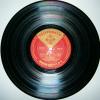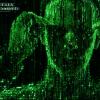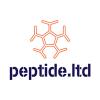So, I have a bit of an update on my regime. I was feeling a bit foggy after 90 seconds per spot on a 2-day on, 1-day off schedule, so I stopped for 4 days and started taking oxaloacetate. Fog cleared right up (due either to the break or the oxaloacetate) and I felt immensely better--my mind felt slightly but noticeably sharper than it did before beginning the protocol. I was more conversational, more energetic, more mentally "bright," etc.
I then LEDed again last night. Today I still feel mentally good, but I noticed the most bizarre thing from my sleep actigraph. My normal sleep involves 5-7 sleep cycles and 40-60% deep sleep. But last night, according to my device, I only had 19% deep sleep and
only 1 sleep cycle. I also almost didn't move at all during my sleep. I've never seen this in 4 months of recording. What the hell?
But I don't feel tired at all today, even though I normally really feel it when I don't sleep well. Bizarre. Any theories?
(This isn't the first time the LEDs have affected my sleep, BTW. Before, they served to increase the depth of my sleep.)
If nothing else, I think that my sleep data provides good evidence that long exposure times, hair-shaving, and so forth are not needed in order for something dramatic (in the biological sense) to occur, since I have fairly thick, almost black hair. The effects of the LEDs are also different from anything the sun would achieve (I've lied out in the sun before, with no experiences like this).
But we still need more hard data. Can other people try recording their sleep? It takes almost zero effort; just download Sleep As Android or the iPhone equivalent and then leave the phone or tablet on the bed during sleep.
Edited by AscendantMind, 12 November 2013 - 08:10 PM.






















































